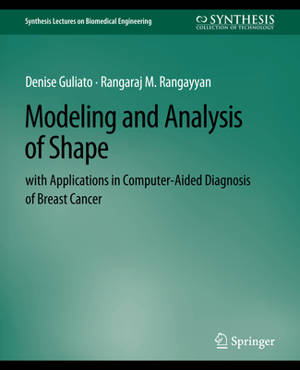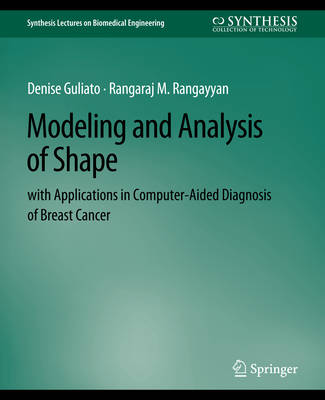
- Retrait gratuit dans votre magasin Club
- 7.000.000 titres dans notre catalogue
- Payer en toute sécurité
- Toujours un magasin près de chez vous
- Retrait gratuit dans votre magasin Club
- 7.000.0000 titres dans notre catalogue
- Payer en toute sécurité
- Toujours un magasin près de chez vous
Modeling and Analysis of Shape with Applications in Computer-Aided Diagnosis of Breast Cancer
Denise Guliato, Rangaraj Rangayyan
34,95 €
+ 69 points
Description
Malignant tumors due to breast cancer and masses due to benign disease appear in mammograms with different shape characteristics: the former usually have rough, spiculated, or microlobulated contours, whereas the latter commonly have smooth, round, oval, or macrolobulated contours. Features that characterize shape roughness and complexity can assist in distinguishing between malignant tumors and benign masses. In spite of the established importance of shape factors in the analysis of breast tumors and masses, difficulties exist in obtaining accurate and artifact-free boundaries of the related regions from mammograms. Whereas manually drawn contours could contain artifacts related to hand tremor and are subject to intra-observer and inter-observer variations, automatically detected contours could contain noise and inaccuracies due to limitations or errors in the procedures for the detection and segmentation of the related regions. Modeling procedures are desired to eliminate the artifacts in a given contour, while preserving the important and significant details present in the contour. This book presents polygonal modeling methods that reduce the influence of noise and artifacts while preserving the diagnostically relevant features, in particular the spicules and lobulations in the given contours. In order to facilitate the derivation of features that capture the characteristics of shape roughness of contours of breast masses, methods to derive a signature based on the turning angle function obtained from the polygonal model are described. Methods are also described to derive an index of spiculation, an index characterizing the presence of convex regions, an index characterizing the presence of concave regions, an index of convexity, and a measure of fractal dimension from the turning angle function. Results of testing the methods with a set of 111 contours of 65 benign masses and 46 malignant tumors are presented and discussed. It is shown that shape modeling and analysis can lead to classification accuracy in discriminating between benign masses and malignant tumors, in terms of the area under the receiver operating characteristic curve, of up to 0.94. The methods have applications in modeling and analysis of the shape of various types of regions or objects in images, computer vision, computer graphics, and analysis of biomedical images, with particular significance in computer-aided diagnosis of breast cancer. Table of Contents: Analysis of Shape / Polygonal Modeling of Contours / Shape Factors for Pattern Classification / Classification of Breast Masses
Spécifications
Parties prenantes
- Auteur(s) :
- Editeur:
Contenu
- Nombre de pages :
- 75
- Langue:
- Anglais
- Collection :
Caractéristiques
- EAN:
- 9783031794285
- Date de parution :
- 14-01-11
- Format:
- Livre broché
- Format numérique:
- Trade paperback (VS)
- Dimensions :
- 191 mm x 235 mm
- Poids :
- 199 g

Les avis
Nous publions uniquement les avis qui respectent les conditions requises. Consultez nos conditions pour les avis.






